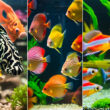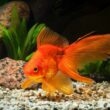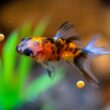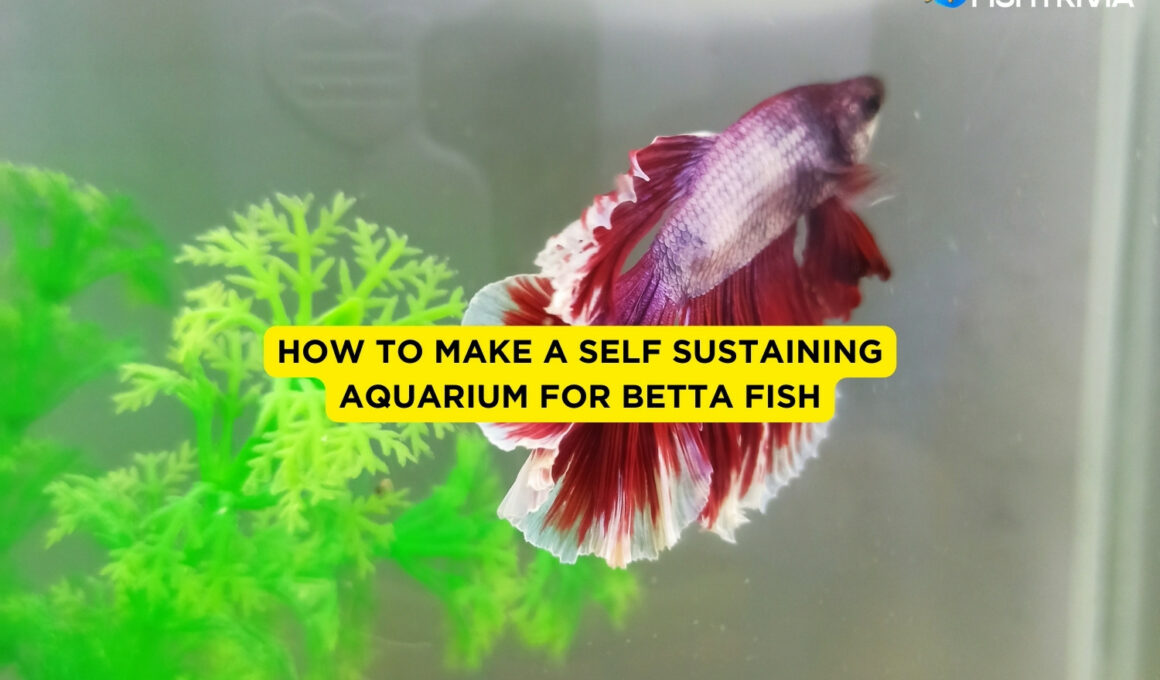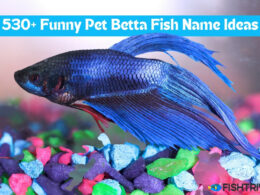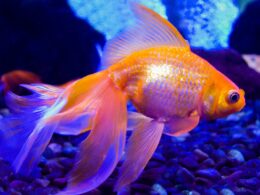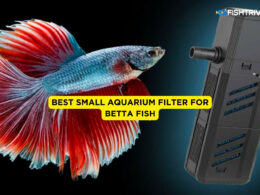In this article Show
The majority of people devote a couple of hours every two weeks to cleaning their aquariums. This is a boring subject for those overworked on a regular schedule, the proportion of maximum Aquarium hobbyists who want my aquarium to run naturally and with minimal maintenance.
The good news is that this type of aquarium can be constructed and managed manually.
This article will cover everything you need to know about self-sustaining aquariums, and you can create one with the right equipment, plants, and fish species after reading it. Read the article attentively, understand why, and be perfect about feeding.
Also worth reading;
- Do Betta Fish Need Darkness to Sleep?
- 7 Best Betta Fish Tanks – Review & Buying Guide (Updated 2022)
- Can Betta Fish See In The Dark?
What Is a Self-Sustaining Aquarium for Betta Fish?
A self-sustaining aquarium is where the ecosystem takes care of itself and does not require constant monitoring. Cleaning is a must to change their environment from time to time, which will cause stress. However, if you can construct this aquarium, you won’t have to deal with much stress.
The best thing about ecosystems is that plants and fish can harmoniously balance their needs. Fish waste plants will help fish stay healthy, filter and clean the water, and provide a cleaner, healthier environment for them to live in.
Building a self-cleaning aquarium will help you to save time and make your vacation more enjoyable. You won’t have to stress about cleaning your tank on time.
What Item You Need To Make Sustaining Aquarium
Some essential items are required to create this self-sustaining aquarium, and the items you’ll need to set up the tank are listed below.
1. Aquarium
If you planned to put so much betta in the tank, you would need a water tank of 20 gallons or larger.
2. Substrate
Typically, a clay-based substrate highly nutritious that improve plant growth is required. You can also use your garden soil, which is chemical-free, but you’ll need to soak it in water for a few days, then dry it, and layer it on the bottom.
3. Plants
Put a plant in your tank which requires low light, and you can include some floating plants like Frogbit, etc.
4. Filters
The plants will act as biological filters in this case, but you can use a filter machine in your betta fish tank to be sure for freshwater.
5. Lights
The tank requires proper lighting, and you must leave it on for at least 10 hours in medium sunlight. You can use artificial light to decorate your tank at night.
6. Invertebrates
Snails are excellent for consuming uneaten food in your fish tank and will never get your fish tank water over-populated. On the other hand, Shrimp play an essential role in the tank by improving water quality. As a result, Nerite snails and shrimp are essential.
Process of Making A Self-Sustaining Aquarium
Because now you have all of the components for your self-sustaining aquarium, it’s time to put them together. However, a poor setup may result in a long time to establish. Try the proper process with us to make the right aquarium.
1. Wash Aquarium, Gravel, and Sand
Small impurities and contaminants that may harm your pets and aquarium plants can be prevented by washing the tank, sand, and gravel and soaking them in water overnight. It is ready to use in the morning and can be added to your tank.
2. Make The Suitable Substrate With Soil, Sand, And Gravel
It’s time to assemble your tank after you’ve filtered the topsoil and washed the sand or gravel. Fill your tank halfway with 1.5 inches of topsoil, 2 inches of sand, and one-half inch of gravel. It depends on your fish tank’s size; if you have a large tank, you can increase these three elements by one inch, especially the soil.
3. Add 3 Inches of Water
Start with treated tap water or distilled water and some fish flakes, but only add about 3 inches of water at a time and stir the sand to work out any extra air bubbles, as this will prevent the soil from leaching out.
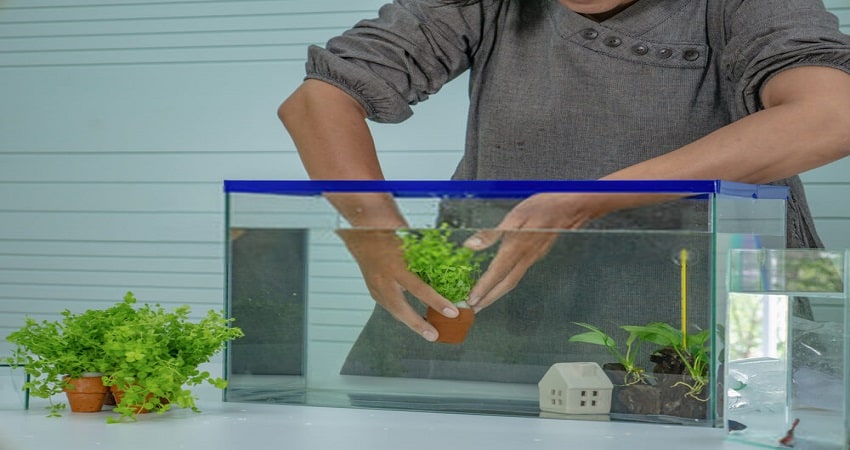
4. Add Plants
Live plants that will go well with the fish should be included. The stem plants should be placed in the middle and front of the aquarium, and large-leafed plants should be placed in the back.
You can use Lotus or Duckweed as a floating plant, but keep in mind that you must allow the plants to grow and develop roots before filling the tank.
5. Fill The Tank
If the plant seems to be growing well, you can fill the tank. Fill the tank slowly and carefully, avoiding disturbing the substrate and soil as much as possible. After 48 hours, you may notice that it is not completely clear. To solve the problem, you’ll need to drain all of the water and then replace the sand or gravel in the soil.
6. Add Invertebrates
It’s time to add the invertebrates you selected after you’ve seen the clear water ultimately. Start with smaller species like snails and work your way up to medium shrimp because they can restart the nitrogen cycle, aerate the soil, and break down waste.
How To Maintenance The Self-Sustaining Aquarium
Since this is a sustaining aquarium but minimum maintenance is required. Here’s see how to make your fish happy so that they can stay happy and healthy for the rest of their lives.
1. Change The Water And Keep The Perfect Temperature
Changing 20-25 percent of the tank’s water once a month is excellent to maintain high-quality water for healthy fish. On the other hand, you should keep in mind that the temperature should not raise 76° to 80° F (25° to 27° C).
The bacteria may die if the water temperature exceeds the recommended range. Because many bacteria will die as a result of this, and the natural food chain will suffer.
2. Control Algae Growth
Algae, along with other microorganisms such as bacteria, help reduce toxic nitrogen levels in the water and produce oxygen, but too many algae are harmful to a healthy aquatic system.
If the algae bloom too much, you can remove it with a magnetic pad, filter floss, and daphnia. Snails can also help. However, don’t remove all of the algae because they are essential.
3. Check The Water Parameters
Because an aquarium’s water chemistry is essential for the health of all aquatic life, testing and maintaining good water quality in your aquarium is a good idea. An imbalance can disrupt the nitrogen cycle in ammonia, nitrates, or nitrites.
Take the advice of a professional to ensure that the water is of the highest possible quality. If the water values remain stable for one month and you don’t notice any of your species’ problems, such as algae or fish gasping, the water is safe. However, a monthly measurement will suffice.
4. Remove Dead Fish
The decomposition of dead fish causes an increase in ammonia and nitrite levels, which can be harmful to the thriving fish. Check for possible deaths at least once a week, and remove any dead fish as soon as possible.
Frequently Asked Questions
How a self-sustaining work?
Filters remove waste by pumping dirty water through media and replenishing your tank with beneficial bacteria to keep the nitrogen cycle going. ‘Self-cleaning’ or ‘no-clean is a marketing ploy. Designed to fool unsuspecting people into believing they don’t have to care for their pets.
How can I get rid of the waste in my aquarium?
Filters remove waste by pumping dirty water through media and replenishing your tank with beneficial bacteria to keep the nitrogen cycle going. ‘Self-cleaning’ or ‘no-clean is a marketing ploy. Designed to fool unsuspecting people into believing they don’t have to care for their pets.
How do I get good bacteria for an aquarium?
A handful of populated gravel or substrate, a used filter pad rinsed in tank water, a used sponge filter, or even an external filter box can all provide beneficial bacteria. Dropping a piece of used filter pad into a new filter box can help a new tank establish a colony of beneficial aquarium bacteria.
Are fish tanks bad for fish?
Although germs can be spread by fish and aquarium water, illness from keeping fish is uncommon. You are less likely to become ill from touching, feeding, or owning aquarium fish if you provide routine care for your fish and their aquarium, as well as follow some simple health tips.
How can I know my betta fish is happy?
Swim actively throughout the tank, not just at the bottom, near the top, or behind plants and ornaments, and eat regularly and quickly at feeding time.
Are fishes feel bored in an aquarium?
For the same reason, fish in aquariums without adequate cover may become very stressed. When fish are crowded together with other aggressive fish, they are likely to be constantly harassed and, in some cases, physically injured.
Final Words
A self-sustaining fish tank aids in the development of a healthy aquatic ecosystem for fish. Being a self-cleaning entity, however, does not imply complete relaxation. Still, for a happier and healthier life for your critters, you must keep the tank and water clean.
Making a self-sustaining aquarium is not difficult, and maintaining it is also simple. We hope that after reading this article, you will find it helpful in achieving your goals.


